Biomass Availability
California covers about 100 million acres and approximately 40 percent of the state is forest. National Forest System lands, managed by the US Forest Service, cover in excess of 18 million acres (approximately 58 percent of the forestland). The remainder of the forested land is a mix of other federal government (BLM, NPS), private, tribal, and state ownerships.
Forest operations such as logging, thinning, fuels reduction programs and ecosystem restoration create a huge amount of woody biomass. Some of this is brought out of the forest for use, but as much as half of the biomass is left in the forest. When residues from mastication and slash from timber harvests are left scattered throughout the forest, they act as additional dry surface fuel and serve to increase intensity and severity if a wildfire burns through the area. Often woody biomass materials are piled and burned creating air pollution and the risk of starting a wildfire. Burning piles only converts five percent of the woods potential energy, whereas biomass plants can increase that efficiency to 80 percent. Biomass plants also reduce criteria pollutant emissions by up to 98 percent compared to open burning.
In practice the cost of removing woody biomass from the forest is often too expensive to justify it. It often requires a subsidy from the landowner or the removal of other higher value products, such as saw logs, to be cost effective.
A cost effective source of readily available woody biomass can be found at sawmills in the form of bark, sawdust, wood chips, wood shavings and cull logs. This material is currently utilized in a number of markets including fuel for power plants, landscape amendments, compost, animal bedding, pulp, and panel board.
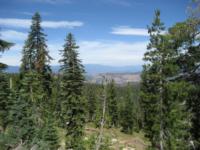
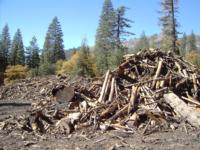
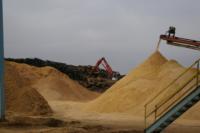
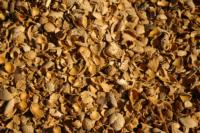
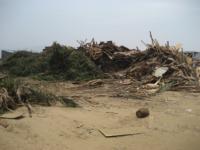
In addition to forest and sawmill sources woody biomass in California includes chaparral, agricultural waste (including nut shells, olive pits, grape pomace, orchard trimmings and removal) and municipal waste sources (post-consumer, post-industrial and green waste such as tree trimmings etc.). These types of low value woody residues would often end up in a landfill otherwise. Utilizing this biomass is an effective method to help local governments meet waste reduction mandates, and diverts 4.3 million tons of wood residue from landfills annually.
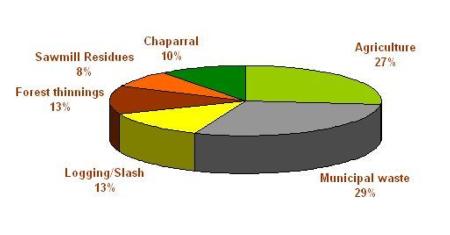
Chart showing distribution of the 32.4 million BDT biomass technically available for use in California in 2007. (Source: California Biomass Collaborative Forum)
In 2007 the California Biomass Collaborative carried out a study of the potential biomass resource in California. The study estimated that there were 32.4 million bone dry tons (BDT) technically available from these sources in California as of 2007. Today, according to the California Energy Commission, there are approximately 47 million BDT of biomass resource potential in California, but the sources of the biomass remain very similar.
Currently the biggest users of woody biomass in California are biomass power plants, composting and other landscaping markets. Check out the video below for more information about biomass availability and how more utilization infrastructure would benefit our forests and communities.
